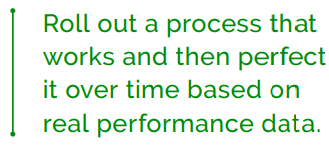What can manufacturers do to overcome these barriers to effective collaboration?
First of all, manufacturers need to adopt technology that will enable them to create a single source of truth and maintain the visibility and communication necessary for collaboration. After that, of course, manufacturers need to integrate their supplier chain partners into their product development system. Here are four things to consider when doing so.
Security
As critical as the sharing of information is, OEMs are understandably wary when providing product design record access to suppliers because it can compromise their IP. For this reason, manufacturers need to determine what product information should be restricted, and to what degree, when it comes to outside partner access. OEMs must ask and answer the following questions before giving any external partner access to product information stored in their PLM or QMS application:
- How will you enable supplier access to the product data they need while preventing access to sensitive or restricted data?
- Do you need to enforce regulatory constraints (e.g., FDA, ISO, environmental) or export controls (e.g., ITAR, EAR)?
- How can you ensure valid security filtering on your most sensitive product design records?
- How will product record attributes allow you to define and determine which suppliers can access, modify, or approve designs during your change review processes?
Proactive Communication
External partners need to be able to access and retrieve specific product information quickly and easily. To ensure fast and proactive communication, it is a good idea to set up automated notifications for your supply chain partners. Automation of processes, such as engineering change orders and reviews, removes bottlenecks, speeds approvals, and eliminates costly mistakes ranging from sourcing the wrong parts to sourcing parts that are not compliant with regulatory standards.
Pragmatism (Not Perfectionism)
Change is inevitable in today’s manufacturing environment. Teams need to be ready to turn on a dime as technology improves, design and manufacturing processes evolve, and market conditions shift. Many companies make the mistake of striving for perfection before using their systems internally or with suppliers. While it’s important to have a good baseline and solid security, it’s best to take a “walk before you run” approach. Once you have addressed security and notification processes, outline a review process that provides the simplest path for getting product designs from engineering to manufacturing. Frankly, you can’t foresee all the issues that may arise with supply chain partners until everyone is using the system. In other words, don’t wait until everything is perfect. It won’t be.
Training
 Training is key for any system, especially when you have a range of players and teams with varying levels of technical aptitude. Cloud-based software-as-a-service (SaaS) solutions lower the “complexity bar” and require less training, thanks to their simpler interfaces delivered via web browsers. The days of having IT teams install client software on dozens or hundreds of desktops while dealing with myriad operating systems and manual client updates are gone. Nevertheless, providing partners with clear onboarding instructions and basic training protocols will smooth the adoption process for everyone.
Training is key for any system, especially when you have a range of players and teams with varying levels of technical aptitude. Cloud-based software-as-a-service (SaaS) solutions lower the “complexity bar” and require less training, thanks to their simpler interfaces delivered via web browsers. The days of having IT teams install client software on dozens or hundreds of desktops while dealing with myriad operating systems and manual client updates are gone. Nevertheless, providing partners with clear onboarding instructions and basic training protocols will smooth the adoption process for everyone.













 Training is key for any system, especially when you have a range of players and teams with varying levels of technical aptitude. Cloud-based software-as-a-service (SaaS) solutions lower the “complexity bar” and require less training, thanks to their simpler interfaces delivered via web browsers. The days of having IT teams install client software on dozens or hundreds of desktops while dealing with myriad operating systems and manual client updates are gone. Nevertheless, providing partners with clear onboarding instructions and basic training protocols will smooth the adoption process for everyone.
Training is key for any system, especially when you have a range of players and teams with varying levels of technical aptitude. Cloud-based software-as-a-service (SaaS) solutions lower the “complexity bar” and require less training, thanks to their simpler interfaces delivered via web browsers. The days of having IT teams install client software on dozens or hundreds of desktops while dealing with myriad operating systems and manual client updates are gone. Nevertheless, providing partners with clear onboarding instructions and basic training protocols will smooth the adoption process for everyone.